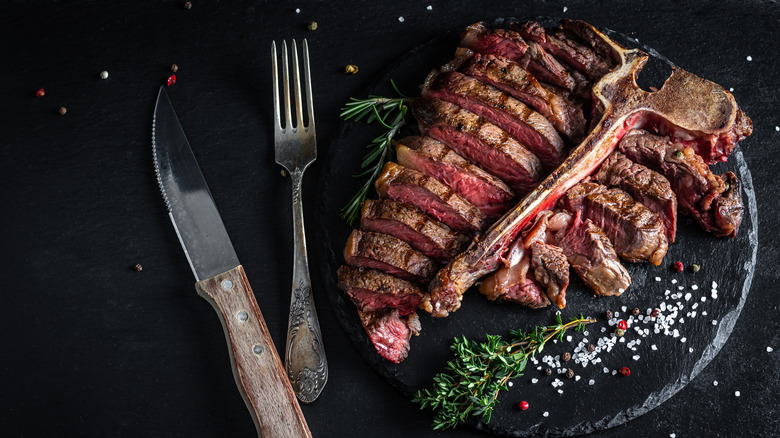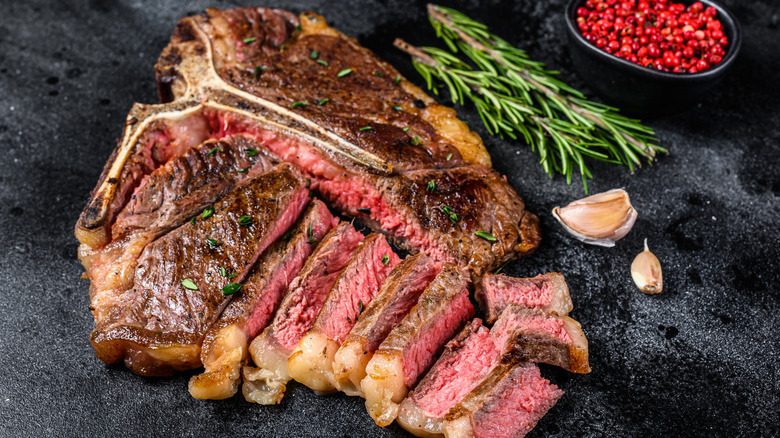The Renaissance-Era Steak Dish We Still Eat The Same Way Today
Ah the Renaissance, known for its beautiful paintings, impressive architecture, and iconic steak cuts? Of the many societal facets that come to mind from the flourish of sweeping cultural and ideological change, the T-bone steak is not one of them. And yet, many of us enjoy the flavorful cut that Tuscans have been dining on since the 16th century. Bistecca alla Fiorentina as it's called in Italian, is simply a thick T-bone cut of steak.
According to Tuscan historians the term "bistecca" comes from the crude Italian translation of the English term "beef-steak." English travelers in Florence began cheering "beef-steak" as they watched a butcher portion off the cut. Low and behold the name stuck. The beauty of this cut comes from the short loin section of a steer – traditionally from the Chianina breed beloved in the Florence region. By cutting the short loin into sections across the bone rather than alongside the bone, you're left with a steak that contains both filet and sirloin strip. If the butcher had cut alongside the bone rather than across, you'd have two separate loins that would each yield either filets or New York strips.
Taste of Tuscany Stateside
For a truly traditional Bistecca alla Fiorentina, you want to cook the steak long enough to get a good sear on the outside with the inside remaining quite rare, in the 120-degree Fahrenheit range. If you like your steaks to be less red you can shoot for an internal temperature closer to 145 degrees, but be warned, the size differential between each side of the T-bone will leave one side cooked more than the other.
A good rule of thumb is to place your thermometer closer to the bone for more accurate readings, that way you get the best cook for any cut. An easy way to cook this delicious steak at home is to pan sear it over a medium-high heat before finishing it in the oven. This way you can achieve a fantastic sear without overcooking either side of the T-bone. Add a drizzle of extra virgin oil to really sell the Italian heritage once rested and, che bello, you're done!
To further dine like a Renaissance era Italian, serve this upper class dish with some grilled artichokes or an olive antipasto. During that time period, foods that grew above the ground were reserved for the nobles. It was thought that the lower to the ground the food came from the better suited it was for lowly peasants. For the non-purists out there grilling at home, you can dress up your Bistecca with added herbs and compound butters.


